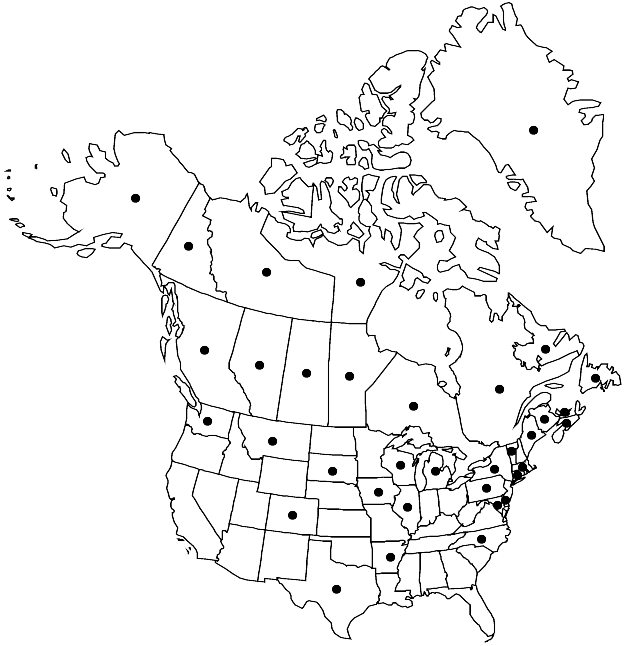Hypnum cupressiforme var. cupressiforme
Plants small to medium-sized, pale to dark green to golden brown. Stems 1–3 cm, reclining to suberect, weakly complanate-foliate, pinnate to irregularly branched. Leaves usually falcate, sometimes strongly so, long-ovate or ovatelanceolate, gradually narrowed to apex; margins subentire to distinctly toothed distally; alar cells many and subquadrate or few and quadrate, not pigmented, region not excavate. Branch leaves 1–2 × 0.2–0.6 mm, sometimes smaller or larger.
Phenology: Capsules mature spring.
Habitat: Terrestrial, epiphytic, rock
Elevation: low to high elevations (0-4000 m)
Distribution

Greenland, Alta., B.C., Man., N.B., Nfld. and Labr., N.W.T., N.S., Nunavut, Ont., P.E.I., Que., Sask., Yukon, Alaska, Ark., Colo., Conn., Del., Ill., Iowa, Maine, Md., Mass., Mich., Mont., N.Y., N.C., Pa., S.Dak., Tex., Vt., Wash., Wis., Mexico, South America, Eurasia, Africa, Atlantic Islands, Pacific Islands (New Zealand), Australia
Discussion
Variety cupressiforme accommodates specimens that cannot be placed in any of the nine varieties recognized by H. Ando, including those accepted here. Sporophytes are produced summer to fall.
Selected References
None.